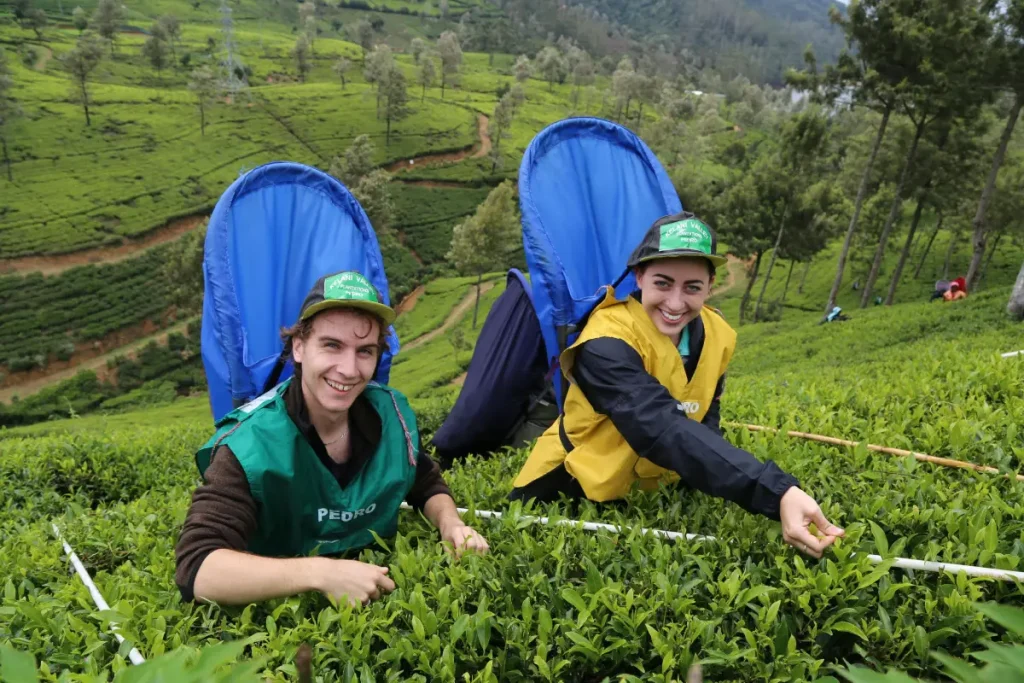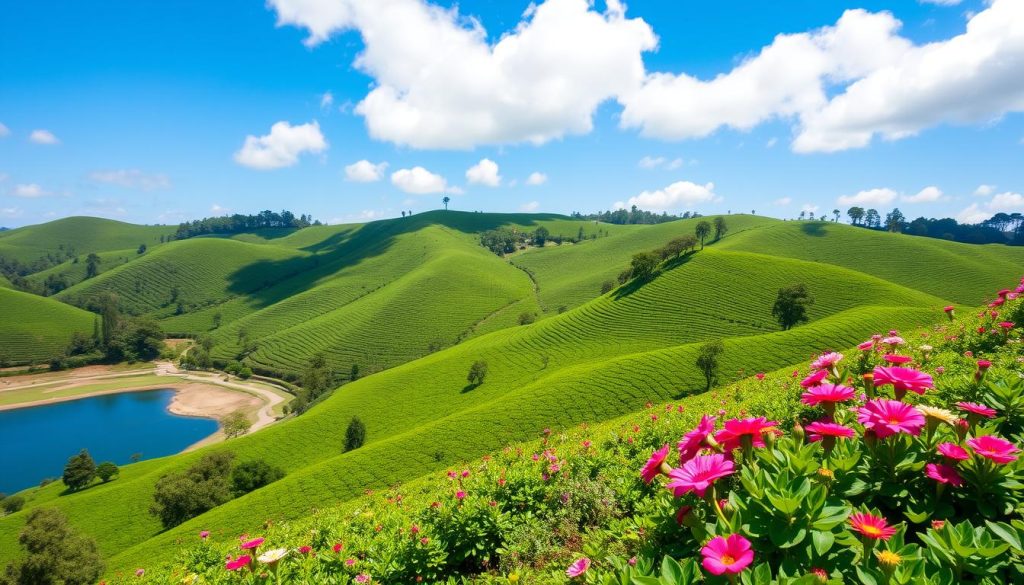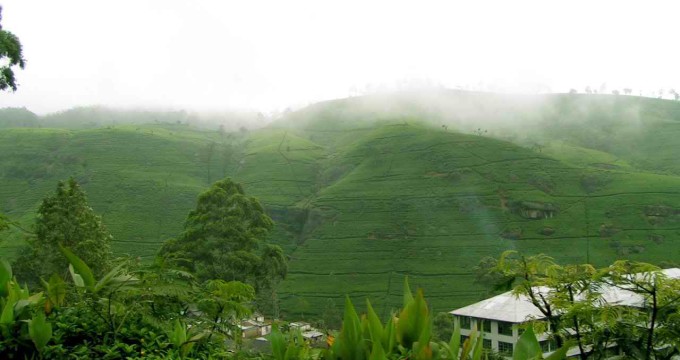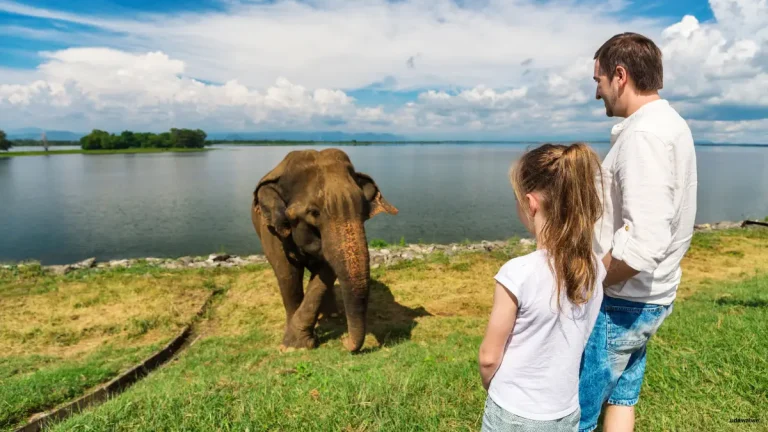Best Time to Visit Nuwara Eliya Tea Plantation

Nestled amidst Sri Lanka’s breathtaking central highlands, Nuwara Eliya is famed for its rolling tea plantations, mist-covered hills, and lush greenery. Known as “Little England,” this charming hill station is not only a haven for nature enthusiasts but also a paradise for tea lovers worldwide. If you’re planning a visit to the enchanting tea plantations in Nuwara Eliya, understanding the best time to travel is key to making the most of your experience.
Why Visit Nuwara Eliya Tea Plantations?
Before we dive into the best time to visit, let’s explore what makes these tea plantations so special:
World-Class Tea: Nuwara Eliya is renowned for producing some of the finest Ceylon tea. Its high-altitude climate and rich soil contribute to the tea’s distinct flavor and aroma.
Scenic Beauty: With misty mountains, cascading waterfalls, and vibrant greenery, the tea plantations are postcard-perfect.
Rich Heritage: A visit to a tea estate often includes a tour of colonial-era factories, where you can learn about the traditional tea-making process.
Tranquility: The serene environment of these plantations offers a much-needed escape from the hustle and bustle of city life.
Understanding Nuwara Eliya’s Climate

Nuwara Eliya enjoys a temperate climate, with cooler temperatures compared to the rest of Sri Lanka due to its elevation. The weather can be categorized into:
Dry Season (December to March): Characterized by clear skies and mild temperatures, making it ideal for outdoor activities.
Inter-Monsoon Season (April to May and October to November): Features moderate rainfall with intervals of sunshine.
Monsoon Season (June to September): Marked by heavy rains, which can make outdoor exploration challenging.
Best Time to Visit Nuwara Eliya Tea Plantations

The optimal time to visit Nuwara Eliya’s tea plantations depends on your priorities. Here’s a detailed breakdown:
1. For Perfect Weather: December to March
Why: These months fall during the dry season, offering clear skies, cool breezes, and minimal rainfall. The weather is perfect for exploring the tea estates, hiking, or simply soaking in the panoramic views.
Activities: Join guided tea estate tours, indulge in tea tasting sessions, and enjoy outdoor activities like trekking to Horton Plains or visiting nearby attractions like Gregory Lake.
2. For Lush Greenery: April to May and October to November
Why: These inter-monsoon months see occasional rain showers that rejuvenate the tea plantations, leaving them at their greenest and most vibrant.
Activities: Witness the tea plucking process, capture stunning photographs, and enjoy quieter tea estate tours with fewer crowds.
3. For Budget Travelers: June to September
Why: While the monsoon season brings heavy rainfall, it’s also the off-peak tourist season, which means fewer crowds and lower accommodation costs.
Activities: Though rain may limit outdoor exploration, you can still enjoy indoor activities like tea tasting or touring tea factories.
Top Tea Plantations to Visit in Nuwara Eliya
If you’re wondering which tea plantations to add to your itinerary, here are some must-visit spots:
Pedro Tea Estate: Known for its picturesque surroundings and guided factory tours that showcase the tea-making process.
Mackwoods Tea Factory: One of the oldest tea estates in Sri Lanka, offering a blend of history, scenic views, and delicious tea.
Damro Labookellie Tea Centre: Famous for its fresh Ceylon tea and a lovely café overlooking the plantations.
Blue Field Tea Gardens: A visitor-friendly estate with detailed tours and opportunities to interact with tea pluckers.
What to Pack for Your Visit
To ensure a comfortable and enjoyable trip, pack the following essentials:
Clothing: Light layers to adapt to the cool mornings and evenings, along with comfortable walking shoes.
Rain Gear: An umbrella or raincoat, especially if visiting during the inter-monsoon or monsoon seasons.
Camera: To capture the stunning landscapes and memorable moments.
Reusable Water Bottle: Stay hydrated while minimizing environmental impact.
Additional Tips for Visiting Nuwara Eliya Tea Plantations
Book Accommodation Early: Especially during the peak season (December to March), as hotels fill up quickly.
Plan Guided Tours: Many plantations offer guided tours, which provide insights into tea cultivation and production.
Support Local Businesses: Purchase tea and souvenirs directly from the estates to support the local economy.
Respect the Environment: Avoid littering and stay on designated paths to protect the pristine surroundings.
Nearby Attractions to Explore
While visiting the tea plantations, make time to explore other highlights of Nuwara Eliya:
Horton Plains National Park: Home to World’s End, a sheer cliff with jaw-dropping views.
Gregory Lake: Perfect for a leisurely boat ride or a lakeside picnic.
Hakgala Botanical Garden: Known for its diverse flora, including vibrant blooms and towering trees.
Seetha Amman Temple: A spiritual site with links to the Indian epic, Ramayana.
Conclusion
The best time to visit Nuwara Eliya tea plantations ultimately depends on your preferences, whether it’s clear skies, vibrant greenery, or budget-friendly travel. Regardless of when you visit, the enchanting beauty, rich heritage, and world-class tea of this region are sure to leave you spellbound. Plan your trip thoughtfully, and immerse yourself in the tranquil charm of Nuwara Eliya’s tea paradise.





